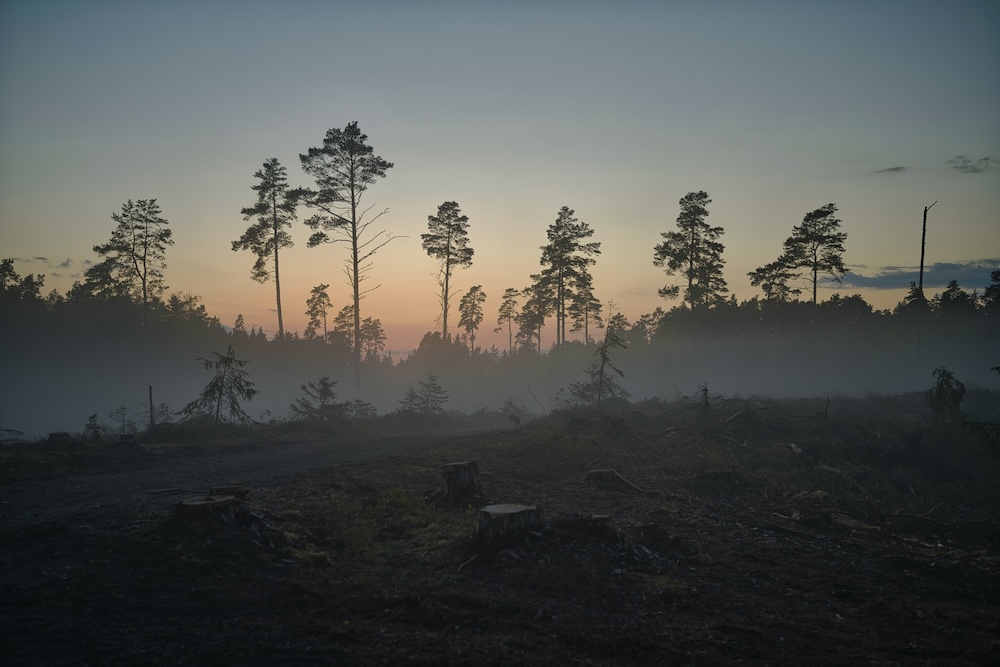Richard Porch provides a guided tour of the architectural delights of Wales’ first Maggie’s Cancer Centre
Buildings designed to fulfil an almost completely emotional agenda are very rare things indeed. They test the power of architecture to modify or augment the mood of the users in ways never normally needed. This is not to say that most buildings are designed without the intention of pleasing the eye and mind, only that it is not the primary consideration. They say that there are no good buildings without good clients and this is also true.
I visited Swansea’s new Maggie’s Cancer Centre on a day of leaden skies and a persistent nagging drizzle. It was a poor day for looking at an exciting new building but a good one to test its spiritual properties. This recently-opened structure in steel reinforced concrete was designed solely to relax the user and take them away from the stress of both their treatment and condition.
The Maggie’s Centres are a charity initiated by the late Maggie Keswick Jencks that provide non-residential support for cancer sufferers and their dependents in a non-hospitalised environment and within a domestic setting. Unfortunately she died of cancer in 1995 before the first one was opened. However, since then eleven have been built in England and Scotland with Swansea the first one in Wales. Plans are afoot for one in Cardiff as well as Hong Kong and Barcelona. The one proposed for Cardiff is still in the fundraising stage and there are rumours it will be designed by a Welsh architect, although that need not mean one currently based in Wales. The site for it will be in the grounds of the Velindre Cancer Hospital at Whitchurch in Cardiff.
Swansea’s Maggie Centre occupies a 4540m² site beside the South West Wales Cancer Centre in the grounds of Singleton Hospital from which (as you would expect) it faces absolutely no competition from architecturally. Newman in Buildings of Wales gives the medical campus short shrift telling us no more than it is comprised of two ten storey blocks the first phase of which was opened in 1961 and that they were designed by O. Garbutt Walton architect to the Welsh Region Hospital Board with many later additions.
What is really distinctive about the Maggie’s Cancer Centres is the quality of the architecture they generate and this is where having a great client comes in. A list of the architects used so far reads like a who’s-who of world architecture in the period 1995 – 2011. Frank Gehry (Dundee), Zaha Hadid (Fife), Richard Rogers (London) and now the late Kisho Kurokawa (1934 – 2007) have all designed Maggie’s Centres for the charity.
That Maggie Keswick was married to the highly influential architectural historian Charles Jencks (1939 – ) was undoubtedly a help. The aim of the centres is to provide information, psychological, emotional and benefits advice for the newly-diagnosed within an environment which is safe, uplifting and welcoming. In other words they are a drop-in centre, indeed they describe their approach as “…calmness, clarity and a cup of tea”.
So they have no ‘working parts’, no need of treatment rooms full of scanners or bleak laboratories that might have worked to define or inform the design process. In fact the Maggie’s Centres set out to have an environment as un-clinical as possible.
This key design parameter came about because of an experience that Maggie Keswick and Charles Jencks had in 1993 when they went to the Western General Hospital in Edinburgh. By this time her cancer had been diagnosed and had spread to her bones, liver and brain. Given 2–3 months to live they were told that someone was doing advanced chemotherapy research in the city and they went to see him. His office was only located after a long search down many bleak hospital corridors before finding the usual inhospitable medical consulting room.
What this experience underlined was the lack of suitable places where people coming to terms with cancer and having to digest information about its treatment and prognosis could go to collect their thoughts. The first Maggie’s Centre was built in a converted stable block near the Western General Hospital in Edinburgh. It was designed by Richard Murphy (who designed the Galeri arts centre in Caernarfon). In the last month of her life Maggie Keswick raised £70,000 before dying in July 1995. In the year afterwards the Maggie Keswick Jencks Cancer Caring Centres Trust came into existence and the Jencks family pledged £100,000 a year for ten years.
The case for having a Maggie’s Centre in Swansea is compelling. South west Wales as a whole – Aberystwyth, Haverfordwest, Swansea, Powys, Carmarthen, Llanelli, Neath Port Talbot and Bridgend – has more than 3,000 new cases a year and it has 20,000 people living with the disease.
The choice of a Japanese architect was a brave and unusual one. Kisho Kurokawa died of heart failure in 2007. Born in 1934 he rose to fame in the 1960s as one of the founders of ‘Metabolism’, a Japanese architectural movement. Before he died he had produced only a sketch design on a site plan with an enigmatic covering note which said:=
A life is a small universe.
A universe is a great life.
We can always communicate with a universe of great life.
In its oriental opacity the statement superficially resembles a kind of extended haiku or Japanese poem. As a non-poet I thought the first two lines sounded plausible enough. However, the unsatisfactory and elongated nature of the third suggests that something got lost in translation and the impact has been dissipated.
When Kurokawa died there must have been the very real threat that the same fate would befall his building. When the lead architect dies like this, the firm that comes in afterwards are called ‘executive architects’. They then have the entirely thankless task of turning nothing more than a conceptual sketch into a real building. This task fell to a young London-based firm of architects called Garbers and James.
You cannot underestimate the amount of time and research that must have gone into converting Kurokawa’s sketch plan into a workable design. Weeks and months that must have gone into thinking through how Kurokawa would have handled spatial issues and relationships, never mind the detailing of joints, the junctions of materials and how they would relate or juxtapose. And all of them had to be consistent with his previous canon of work. So forensically successful have they been, that we are actually able to analyse the subsequent building as if it was one of his own.
The building’s 345m² planform is focused around an ovoid shape from which two swirling arms spin out dynamically in opposed directions. It is a dramatic gesture which also creates fascinating amounts of negative space around the building’s edges into which landscaped gardens will fit.
So, in plan the building has three distinctive elements. The first is at the centre of the plan and is an ovoid or egg-shaped core that houses an entrance hall and kitchen and above a mezzanine gallery. From that, two curved arms arc out in opposing directions and taper into dramatic points that project outwards like some architectural equivalent of the Ying – Yang symbol or the stylised spiral arms of some distant galaxy.
As a starting off point for creating a building this is architecture raised almost to the point of calligraphic gesture. Having said that, Kurokawa’s original drawing is not as refined as the finished piece, nor could we expect it to be. The tapered curving arms should be a recipe for a lot of redundant space and pointy corners that have no use. However, the architects have overcome this with clever solutions in the form of bench seats that open to reveal storage space within.
The curving walls would have made adding storage units very problematic in any case. The building’s freedom from anything as inhibiting as an accommodation programme has meant that it tends to come across as the rather showy home of a very (very) affluent couple with a taste for socialising. Rumour has it that the building / fit-out costs came out at £4,000 per square metre and this enabled the executive architects to also create some eye-catching bespoke furniture. At least three sets of chairs and a fascinating kitchen table with helicoidal elements testify to the generosity of the budget. The table top has a tear-drop shape and curving helicoidal support members which seem (at least to me) like a sly visual quote back to one of Kurokawa’s unbuilt conceptual city projects of 1961.
Yet this most modern-looking of buildings actually calls on old Japanese architectural traditions of having the hearth and kitchen at the centre of the structure. Thus, upon entering the building one first sees a fire, people eating and drinking and you are at once relaxed. Having been met and greeted there you can move off into one of spiral arms that contain either counselling rooms or relaxation space. In this building space flows freely from one area into another and there is scarcely a straight line anywhere to be seen. Surfaces join up with other surfaces and spaces merge in one continuous whole.
The building has many attractive features which appear to grow naturally out of the technology of its construction. The zinc roof appears to emerge or unravel from a central cone and spiral down the buildings arms in almost a reptilian fashion. It ends in ‘tails’ either side of the building so close to the ground that you can actually touch them. The principal elevations are made from concrete panels that have been enlivened by embedding shards of titanium in them. This works to break up what would otherwise be unrelieved slabs of pre-cast concrete and endows them with a speckled appearance that will (on sunny days) catch the light. Taken with their punctuation by numerous small square and rectangular windows, the result turns the structures own concrete walling into the sort of compositional exercise that architects love. It also gives the building an extra level of visual interest – so everyone benefits.
Metabolism was Japan’s great contribution to the evolution of Modernism as an architectural style. It took the machine aesthetic and subtly altered it by introducing a biological one. This had the effect of introducing zoomorphic elements which have permeated Kurokawa’s work ever since the 1970s. What it did was give him the freedom to create ever more interesting buildings with an additional freight of imagery that did not depend on the buildings function to deliver or inspire.
Part architectural pavilion – part sanctuary, Kurokawa’s design is by a country mile Swansea’s most eye-catching piece of architecture. The building can be found on the edge of the Singleton Hospital campus and looks out over the very busy Sketty Lane road. In its spirit and architectural form it is an ornament to the city and for that we have to thank the late Maggie Keswick Jencks, her family and the organisation behind the Maggie’s Centres who have made it possible. As I said at the beginning of the article – there is no good architecture without a good client…








